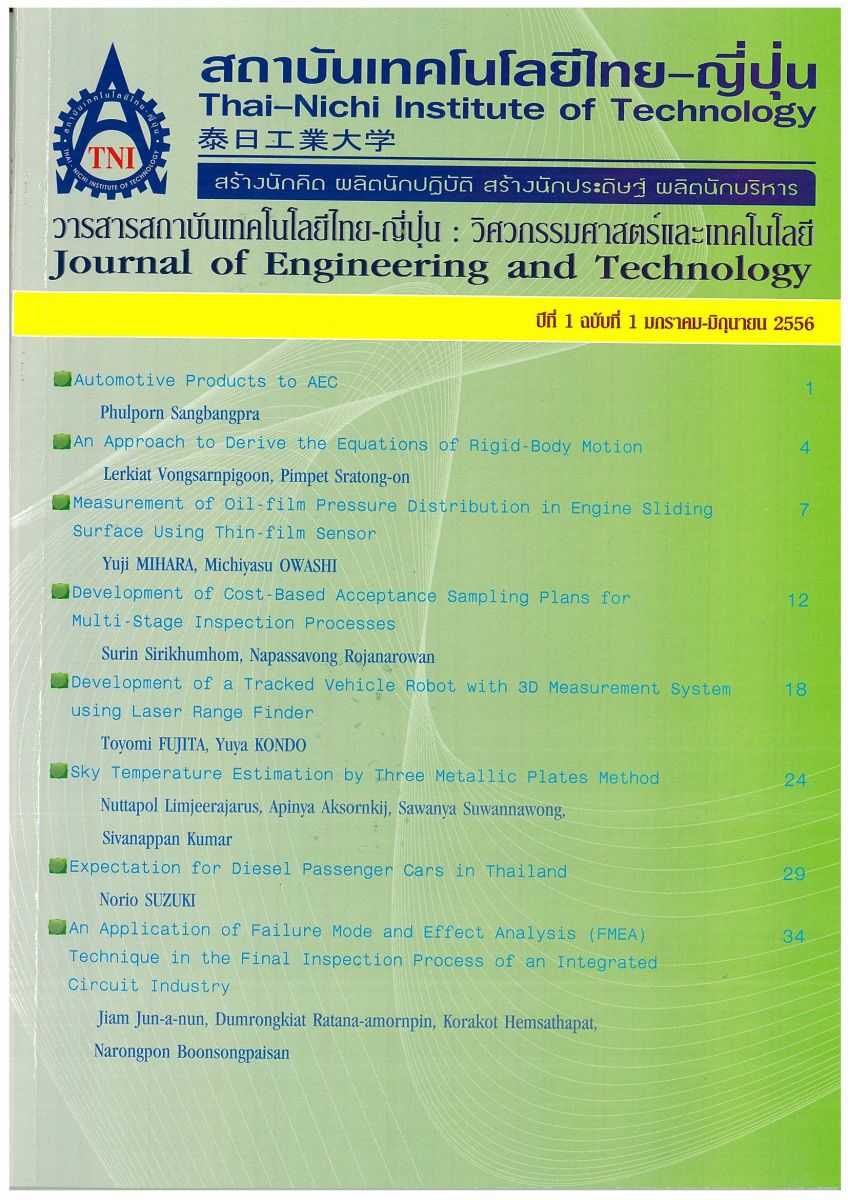An Approach to Derive the Equations of Rigid-Body Motion
Main Article Content
Abstract
In most engineering mechanics textbooks, the equations of general rigid-body motion are usually arrived at in anon-rigorous way, often through motivation using special cases and generalization. The topic of motions in a moving frame is then usually presented separately afterward. In this paper, the equation for velocity of a rigid body is derived by attaching a frame to the rigid body and utilizing the property of a moving frame. The existence of a unique angular velocity vector is then proved and the equations for the general motion of a rigid body follow logically.
Article Details
Article Accepting Policy
The editorial board of Thai-Nichi Institute of Technology is pleased to receive articles from lecturers and experts in the fields of engineering and technology written in Thai or English. The academic work submitted for publication must not be published in any other publication before and must not be under consideration of other journal submissions. Therefore, those interested in participating in the dissemination of work and knowledge can submit their article to the editorial board for further submission to the screening committee to consider publishing in the journal. The articles that can be published include solely research articles. Interested persons can prepare their articles by reviewing recommendations for article authors.
Copyright infringement is solely the responsibility of the author(s) of the article. Articles that have been published must be screened and reviewed for quality from qualified experts approved by the editorial board.
The text that appears within each article published in this research journal is a personal opinion of each author, nothing related to Thai-Nichi Institute of Technology, and other faculty members in the institution in any way. Responsibilities and accuracy for the content of each article are owned by each author. If there is any mistake, each author will be responsible for his/her own article(s).
The editorial board reserves the right not to bring any content, views or comments of articles in the Journal of Thai-Nichi Institute of Technology to publish before receiving permission from the authorized author(s) in writing. The published work is the copyright of the Journal of Thai-Nichi Institute of Technology.
References
[2] R.C. Hibbeler, Engineering Mechanics: Dynamics, 12th ed. in SI units. Jurong, Singapore: Prentice Hall, 2010.
[3] F.P. Beer, E.R. Johnston, Jr., E.R. Eisenberg and D. Mazurek, Vector Mechanics for Engineers: Statics and Dynamics, 9th ed. New York, U.S.A.: McGraw-Hill, 2009
[4] L. Vongsarnpigoon, “A note on rigid-body motion,” East-West Journal of Mathematics, a special volume for the International Conference on Computational Mathematics and Modeling,
Bangkok, Thailand, pp. 138-141, 2002.
[5] R. Temam and A. Miranville, Mathematical Modeling in Continuum Mechanics. Cambridge, England: Cambridge University Press, 2001.


